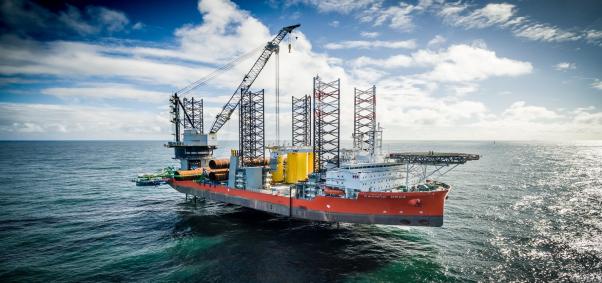
LIMA MAYOR: CITIES ARE KEY TO DRIVING ECONOMIC GROWTH AND FIGHTING CLIMATE CHANGE
New studies highlight opportunities to build cleaner, more competitive cities in the developing world
PRESS RELEASE
Tuesday November 25th 2014
Contact: Tan Copsey
Tan.copsey@newclimateeconomy.net
T: +447979552390
How cities develop will be critical to achieve economic growth and tackle climate change, according to a series of studies released this week by the Global Commission on the Economy and Climate.
The five studies released today provide real-world examples of how to achieve better patterns of urbanisation and highlight how cities can grow their economies while reducing greenhouse gas emissions.
Read the studies at http://newclimateeconomy.report/misc/working-papers/
One of the case-studies focuses on the city of Lima, which next week hosts global climate negotiations. Lima currently has over 7 million inhabitants and is one of the fastest growing cities in Latin America. Without further action it will see substantial increases in energy bills, which will be bad for the poor, and more greenhouse gas emissions, which will be bad for the climate.
Speaking before the summit, the Mayor of Lima Susana Villarán said: “The challenge of supporting economic growth and tackling climate change will be met in the world’s cities. Investing in public transport is good for citizens, good for business and good for the climate. This study shows that it is in the economic interest of the city and of its people to build better. Clear leadership is now needed to make this vision a reality.”
Research conducted for the Global Commission shows that through effective investments in transport Lima can reduce its carbon emissions by 15% by 2025 while saving citizens US$1.1 billion per annum in energy bills. If done well, these investments would be paid back in less than 3 years, building on the improvements already implemented in the city.
There is real potential for similar savings across major cities:
- The world’s 724 largest cities could reduce greenhouse gas emissions by up to 1.4 billion tonnes of carbon dioxide equivalent annually by 2030 through better, more efficient transport systems. This is greater than the annual emissions of Japan.
- Adopting low-carbon technologies - such as new building technologies and electric buses – across 30 megacities could create more than 2 million jobs, while avoiding 3 billion tonnes of cumulative greenhouse gas emissions and 3 million tonnes of local air pollution by 2025.
Progress is already being made around the world:
- Curitiba in Brazil has accommodated a threefold increase in population since the 1960s while achieving per capita greenhouse gas emissions 25% lower and gasoline consumption 30% lower than the national average.
- In Europe, Stockholm reduced emissions by 35% from 1993 to 2010, but grew its economy by 41%. Car ownership in London decreased 6% from 1995 to 2011, while the city’s economy grew by 40%.
Business-as-usual urbanisation is creating huge economic and social costs:
- Traffic congestion for example costs 3.4% of GDP in Buenos Aires and 2.6% in Mexico City. In Beijing, the social costs of motorised transport, including air pollution and congestion, are as high as 15% of GDP.
- Urban sprawl in the United States adds some US$400 billion in extra costs each year, as a result of greater infrastructure, public service delivery and transport costs.
- Alarmingly, 86% of cities currently exceed World Health Organisation guidelines for outdoor air pollution, leading to 730,000 premature deaths.
Graham Floater of LSE Cities at the London School of Economics, director of the cities research for the Global Commission, said: “Over the next two decades, cities will grow by over a billion people and generate two thirds of global economic growth. If this rapid urban growth is managed badly, we face a world of sprawling, inefficient, polluted cities – and a major climate change risk. But a new breed of cities is emerging with compact, connected development – innovative cities that are more productive, attractive and low carbon. Governments can learn from these cities.”
The work for the Commission’s report shows that shifts towards more compact, connected development can create cities which are better for people to live in, more economically competitive and also lower carbon emissions.
--ENDS—
Additional quotes
Pete Erikson of the Stockholm Environment Institute, said “cities are playing an increasingly important role in climate change mitigation, showing leadership and creativity and demonstrating that there is plenty of overlap between good economic development and emissions reduction. The more we recognise cities’ vital role in tackling the climate problem, the better we’ll be able to support and encourage them, and thus maximize the benefits of local action.”
Ani Dasgupta of the WRI Ross Center for Sustainable Cities said: "Mayors and policy-makers adopting low-carbon strategies are making their cities more livable and more attractive to talent and entrepreneurs. The economy and the environment of urban areas go hand-in-hand in creating growth."
Background
The New Climate Economy is the flagship project of the Global Commission on the Economy and Climate. It was established by seven countries, Colombia, Ethiopia, Indonesia, Norway, South Korea, Sweden and the United Kingdom, as an independent initiative to examine how countries can achieve economic growth while dealing with the risks posed by climate change.
Chaired by former Mexican President Felipe Calderón, and co-chaired by renowned economist Lord Nicholas Stern, the Commission comprises 24 leaders from 19 countries, including former heads of government and finance ministers, leading business people, investors, city mayors and economists. It has been advised by a panel of world-leading economists chaired by Lord Nicholas Stern and includes two Nobel Laureates.
This cities research for the Global Commission on the Economy and Climate was undertaken by a consortium of partners, led by LSE Cities at the London School of Economics and including the ESRC Centre for Climate Change Economics and Policy, Oxford Economics, Stockholm Environment Institute, the Victoria Transport Institute, and the World Resources Institute.
The work drew on a global Call for Evidence which featured submissions from over 30 leading institutions from across the private sector including: Atkins, CitiBank and Siemens; city networks including the C40 and ICLEI; and international institutions such as the OECD, UNHABITAT and the World Bank; alongside world leading urban experts.






